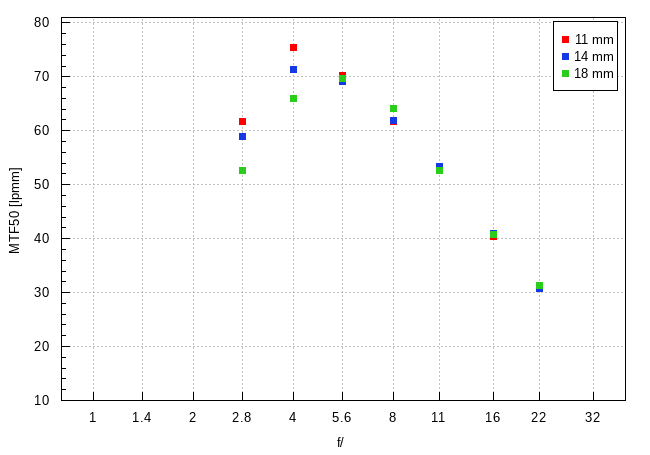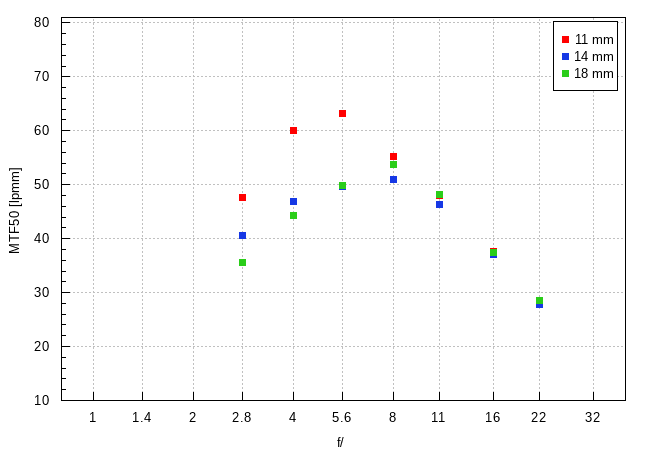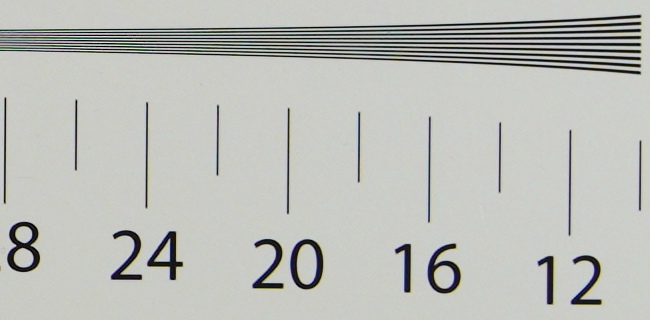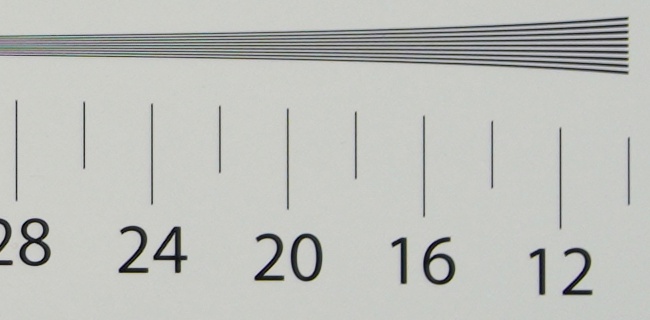Tokina ATX-M 11-18 mm f/2.8
4. Image resolution
Now let's see how the Tokina ATX-M 11-18 mm f/2.8 compares – its results in the frame centre at 11, 14, and 18 mm focal lengths presents a graph below.

Please Support UsIf you enjoy our reviews and articles, and you want us to continue our work please, support our website by donating through PayPal. The funds are going to be used for paying our editorial team, renting servers, and equipping our testing studio; only that way we will be able to continue providing you interesting content for free. |
- - - - - - - - - - - - - - - - - - - - - - - - - - - - - - - - - - - - - - - - - - - - - - - -
At the widest angle of view the results are excellent, especially as you deal here with a zoom device. A very good value, exceeding 60 lpmm, we get already at the maximum relative aperture; on stopping down the lens you are able to reach even near 75 lpmm.
The results at the longer end of the focal spectrum are weaker but only a litlle bit. In both cases even by f/2.8 the lens lands firmly above the decency level and on stopping down it is able to reach near 70 lpmm.
Maximum results of the tested Tokina can be higher than the results of the Sony E PZ 10-20 mm f/4 G, so praised in our test. Still the Tokina has it a bit easier as it is a faster lens. Of course it doesn't change the fact that both lenses in the frame centre are able to generate images of very good quality no matter what focal length and/or aperture you employ.
Now let's check the situation on the edge of the frame – an appropriate graph you can find below.

It's clear the producers focused on the shortest focal length, a sensible tactics when it comes to this type of equipment. As a result, image quality at 11 mm is simply beyond reproach – you get sharp images from f/2.8 onward and they only improve as you stop the lens down.
In the middle of the focal range there are no reasons to complain either. At the maximum relative aperture images are decent and they also improve slightly by f/4.0, f/5.6, and f/8.0.
A combination of the maximum focal length and f/2.8 aperture is the only weak spot here. Images are slightly blurry but the lens manages to reach the decency level already near f/3.5. In case of the 18 mm focal length image quality improves on stopping down the aperture and it's a process even faster than in the middle of the range. As a result, near f/8.0 the lens exceeds distinctly 50 lpmm.
Overall our resolution assessment of the Tokina 11-18 mm is high. The lens is very sharp in the centre of the frame and remains decently sharp on the edges, providing that you steer clear of the maximum relative aperture at the maximum focal length.
At the end of this chapter, traditionally, we present crops taken from photos of our resolution testing chart saved in JPEG format alongside RAW files which we used for the analysis above.
| Sony A7R III, JPEG, 11 mm, f/4.0 |
 |
| Sony A7R III, JPEG, 18 mm, f/2.8 |
 |






